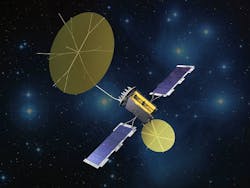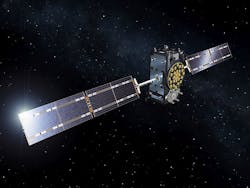By Dan Friedlander
Retired following 44 years in components engineering
Electrical, Electronic, and Electromechanical (EEE) parts and the traditional MIL-SPEC methodology, based on risk avoidance by testing the finished parts, have proven to be suitable for use in military and space applications. Global developments like declining availability and budget constraints have triggered the need to find an alternative solution. In 1994, then U.S. Secretary of Defense William Perry issued a directive imposing the use of this alternative: commercial off-the-shelf (COTS) parts in military applications, exempting space applications. (The term "COTS" here refers to commercial EEE Parts, including plastic encapsulated active ones.)
After decades of successful use of COTS in military applications, the above change has been proved viable.
Many challenging space applications requirements can be met only using COTS. The time has come (better sooner than later) for policymakers to reach a consensus on applying the COTS philosophy to space applications. This policy change is critical for the space industry.
The main obstacle to be overcome to change the present policy on the use of selected COTS in space applications is the well-known resistance to change.
Resistance to change
There are objective reasons, for those involved in shaping the space industry policy, to resist change; unfortunately, there are also well-rooted subjective reasons for resistance to change.
To quote Albert Einstein: "If the facts do not fit the theory, change the facts." I rely on the genius that he did not mean the above literally, but it was an expression of his sense of humor showing his absolute confidence in his theory. Fortunately, there are not too many genius people to claim absolute confidence. I would dare not to resist change and change the above to a more relevant statement: “If the facts do not fit the theory, change the theory.”
Click here to read Part One of the series
“COTS/EEE parts in space applications: evolution overview, revolution forward view”
Another Albert Einstein quote is directly applicable: "We cannot solve our problems with the same thinking we used when we created them." In other words, methodology change invokes change of thinking.
Resistance to change can be a huge problem. In the 1920s, H.P. Lovecraft said: “The oldest and strongest emotion of mankind is fear, and the oldest and strongest kind of fear is fear of the unknown.”
To quote Rosanne Cash: "The key to change is to let go of fear." The subject fear is there at all levels: individual, organizational, governmental, etc. History teaches that the resistance to change is always temporary.
"The first step toward change is awareness. The second step is acceptance,” according to Nathaniel Branden. Professionally, most of the involved personnel in the space industry is aware of the needed change.
To quote Ayn Rand: “We can ignore reality, but we cannot ignore the consequences of ignoring reality.”
At the same time, Jimmy Dean famously said: "I can't change the direction of the wind, but I can adjust my sails to always reach my destination." Resistance to change cannot beat reality. The right thing to do is to adapt to reality in an educated, controlled manner.
The bottom line is:
Let ELECTRICAL Engineers deal with CURRENT events and do it with less RESISTANCE.
The author has graduated ENGINEERING SCHOOL/TEL AVIV UNIVERSITY, physics 1965-1969. He has 44 years of experience in Component Engineering at MBT/ISRAELI AEROSPACE INDUSTRIES, 1969-2013, as Head of Components Engineering. He was responsible for all aspects of EEE Components (policy making, standardization at corporate level, approval, etc.) for military and space applications. Retired/Consultancy: 2013 - present. Further details of experience: see https://www.linkedin.com/in/dan-friedlander-63620092?trk=nav_responsive_tab_profile
Search the Aerospace & Defense Buyer's Guide
You might also like:
Subscribe today to receive all the latest aerospace technology and engineering news, delivered directly to your e-mail inbox twice a week (Tuesdays and Thursdays). Sign upfor your free subscription to the Intelligent Inbox e-newsletter at http://www.intelligent-aerospace.com/subscribe.html.
Connect with Intelligent Aerospace on social media: Twitter (@IntelligentAero), LinkedIn,Google+, and Instagram.
Intelligent Aerospace
Global Aerospace Technology NetworkIntelligent Aerospace, the global aerospace technology network, reports on the latest tools, technologies, and trends of vital importance to aerospace professionals involved in air traffic control, airport operations, satellites and space, and commercial and military avionics on fixed-wing, rotor-wing, and unmanned aircraft throughout the world.




